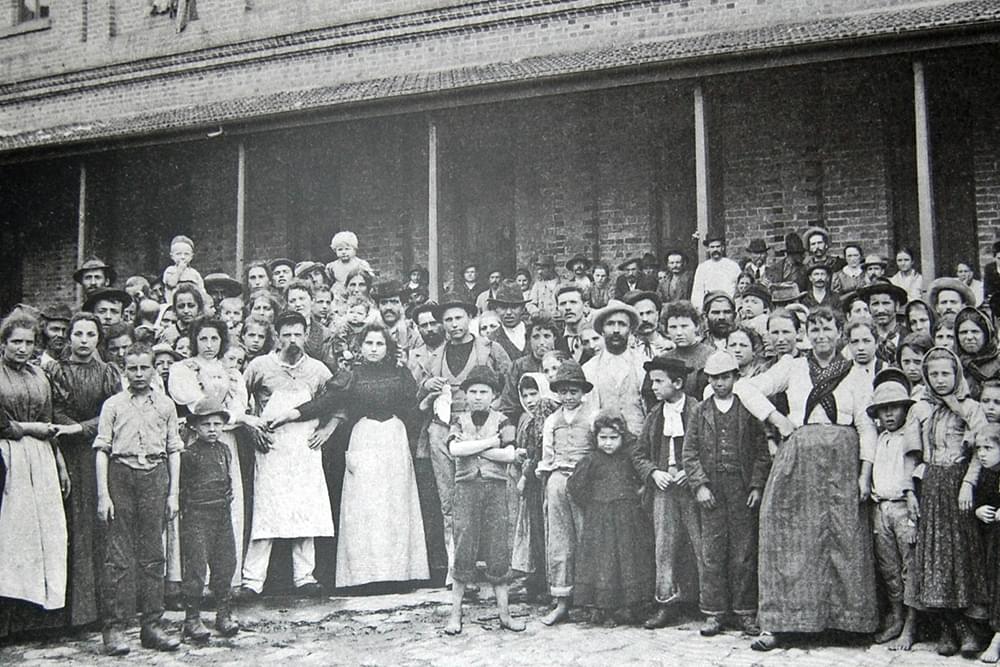
The story of the Italian Diaspora is a vast and intricate tapestry woven through centuries of movement, hardship, hope, and resilience. From the hills of Tuscany to the streets of Buenos Aires, from the ports of Naples to the neighborhoods of New York and Melbourne, Italians have carried with them their language, traditions, flavors, and values, building thriving communities across continents.
But why did so many Italians leave their homeland? What were they searching for? And how has their presence shaped the countries they adopted, and the Italy they left behind?
The term Italian Diaspora refers to the large-scale emigration of Italians from Italy to other parts of the world. While small migrations occurred in earlier centuries, the most significant waves happened between the late 19th and early 20th centuries, and again after World War II.
In total, it is estimated that over 27 million Italians left the country between 1861 (the year of Italian unification) and the 1970s, making it one of the largest voluntary migrations in modern history.
Italy in the 19th century was a newly unified country, riddled with economic inequality, especially between the industrializing North and the rural South. Many Italians, particularly from regions like Calabria, Sicily, and Campania, faced poverty, unemployment, and lack of land.
In addition to economic issues, southern Italy suffered from natural disasters (such as the 1908 Messina earthquake) and food shortages, pushing many to seek a better life elsewhere.
Political instability, oppressive regimes, and, later, fascism under Mussolini, also contributed to emigration.
At the same time, countries like the United States, Argentina, Brazil, Canada, and Australia were undergoing industrial expansion and offered opportunities for laborers in factories, farms, and infrastructure projects.
By 1920, more than 4 million Italians had entered the U.S. Many settled in cities like New York, Boston, Chicago, and Philadelphia, forming the now-iconic Little Italys.
In South America, Buenos Aires and São Paulo became hubs for Italian immigrants. Argentina, in fact, has one of the largest populations of Italian descent outside of Italy.
Italian communities flourished in Toronto, Montreal, and Vancouver, especially after WWII. Many worked in construction and manufacturing.
Post-war migration policies brought a surge of Italians to cities like Melbourne and Sydney, where they helped shape Australian culture, particularly through food and architecture.
Countries like Switzerland, Germany, France, and the UK also became homes for waves of Italian workers, particularly in the 1950s and 60s.
Immigrants faced language barriers, discrimination, and often lived in crowded, unsanitary conditions. In the U.S., Italians were sometimes seen as racially inferior and faced social exclusion.
Most started in low-paying, physically demanding jobs, but over time, many climbed the social ladder through hard work, education, and entrepreneurship.
Italians abroad contributed richly to their new countries, bringing with them:
Cuisine: Pasta, pizza, espresso, and gelato became global staples.
Music and Cinema: Italian traditions influenced film, opera, and pop culture.
Architecture and Design: Italian aesthetics shaped public spaces and domestic interiors.
Festivals and Religion: Saints' festivals, Catholic traditions, and community gatherings remained vital.
While many assimilated into their new cultures, they also preserved their Italian roots through:
In places like Argentina and the U.S., second and third generations continue to embrace their Italian heritage, often through food, travel, and cultural associations.
For many decades, Italy regarded its emigrants with a mix of loss and pride. In recent years, however, the country has begun to actively embrace its global citizens, granting dual citizenship rights and launching initiatives to reconnect with Italian descendants abroad.
While the mass migrations of the past have slowed, a new wave of emigration, often referred to as the “brain drain”, has emerged. Today, young Italians, especially university graduates, move abroad in search of:
Destinations now include London, Berlin, Barcelona, and cities in the U.S. and the UAE.
The Italian Diaspora is not merely a story of departure, it is a story of connection, transformation, and cultural resilience. It is found in the pizzerias of Brooklyn, the piazzas of São Paulo, the Italian film festivals of Sydney, and in the hearts of millions who say, “I’m Italian, too.”
Through adversity, adaptation, and enduring love for their roots, Italians abroad have helped build bridges between cultures, contributing immeasurably to the global community.
The Italian Diaspora is a living, evolving saga. It speaks to the universal human desire for belonging, opportunity, and identity. Whether you’re sipping espresso in Boston’s North End, dancing the tarantella in Buenos Aires, or exploring your nonna’s hometown in Calabria, you’re part of this incredible journey, a testament to the richness of Italian heritage, wherever it blooms.

More Details